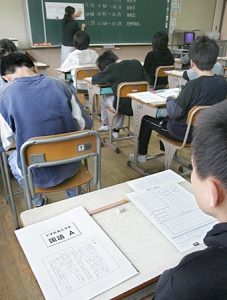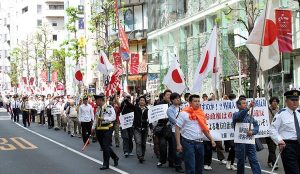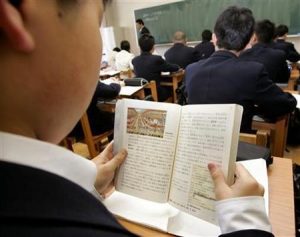同化と差異化が同時進行する世界の教育政策: 学力テストの日豪比較から
Memo #149 – 今日、全国の小学校と中学校の約30%を対象に全国学力・学習状況調査(以下「学テ」)が実施された。もちろん、こうした全国的な学力テストを導入して学力の向上を図る教育政策は、日本に限ったことではない。グローバル化した「知識経済」において、国の経済的生産性を高め国際的な競争に生き残るには、労働者の知識・技能レベルの底上げが不可欠であり、そのためには全国学力テストを通じて教育の質を向上する必要がある、というのが先進国に共通する政策的見立てである。
Japan’s Failure to Enfranchise its Permanent Resident Foreigners
Memo #145 – Over 500,000 Koreans, many who were born and raised in Japan, have become disheartened since Japan’s historic change of government in 2009. In March 2010, the Japanese government failed to submit the long-awaited bill to give voting rights to permanent resident foreigners. Enfranchisement is a major political issue in Japan and the political rights of permanent resident foreigners are ignored.
Japanese History Textbook Controversies: The Missing Link
Memo #144 – History textbook controversies in Japan (教科書問題) focus on “facts” about particular events and question specific phrasing and numbers. In the past, Chinese and South Korean governments have charged that Japanese government-screened history textbooks allegedly trivialized and/or justified past atrocities.
Japan’s Soma City One Year after the Disaster (Video Interview with Dr. David W. Edgington)
Memo #138 – Dr. David Edgington has conducted research on Soma City, Japan, since last year’s earthquake, tsunami, and nuclear disaster. Soma City, one of many devastated communities, is a remote agriculture and fishing village along the coast and is a part of the Fukushima prefecture.
Social Networks and Japan’s 3/11 Disaster
Memo #137 – Social networks matter. They help us find jobs. They influence whether or not we vote and if we gain weight or get buff. Long before last year’s nuclear disaster in Japan, electric power utilities worked with the central government to place atomic power plants in villages along the coast with weaker social networks.
Filipina Immigrant Girls’ Lived Experience in Japan
Memo #134 – Filipina women, who entered Japan as “entertainers” or as the spouses of Japanese men, sometimes left children behind to be raised by relatives in the Philippines while they built economically viable lives in Japan. More and more, the teenage children of these migrant women are entering Japan, entering Japanese schools, and entering society as an important and recent immigrant youth population. These youth are being reunited with their mothers, beginning lives with unknown step-families, and struggling to learn Japanese – which is often their third or fourth language. Most scholars focus on how immigrant youth are victimized by an assimilationist-oriented education system, with its Japanese-only language policies and hyper-competitive high school entrance exams. But this focus allows only a small glimpse of their lived experience.
How Finnish, not East Asian Education Became a Global Reference
Memo #132 – Finnish education has become the global symbol of educational excellence since its success in the Organization for Economic Development and Cooperation’s (OECD) Programme for International Student Assessment (PISA) implemented triennially since 2000. Every year, a few thousand international visitors, including many from East Asian nations, flock to the small Nordic nation to discover “how Finland gets it right.”
「フィンランド教育ブーム」再考
Memo #132 – 2000年以来、3年毎に実施されているOECDの国際的な学習到達度調査(以下PISA)において好成績を収めたフィンランドは、優れた教育改革のモデルとして世界中の教育関係者の注目を集めている。毎年数千人もの海外教育関係者がこの北欧の小国を訪れており、東アジアからも多くの人々がそのPISA成功の「秘訣」を探りに、「フィンランド詣で」を敢行している。
A New Japanese Voice at the G20
Memo #118 – The G20 Summit in Cannes just finished after a breathtaking Kalamatianós around global institutional reform and commitments. In this process, what was Japan’s role?







